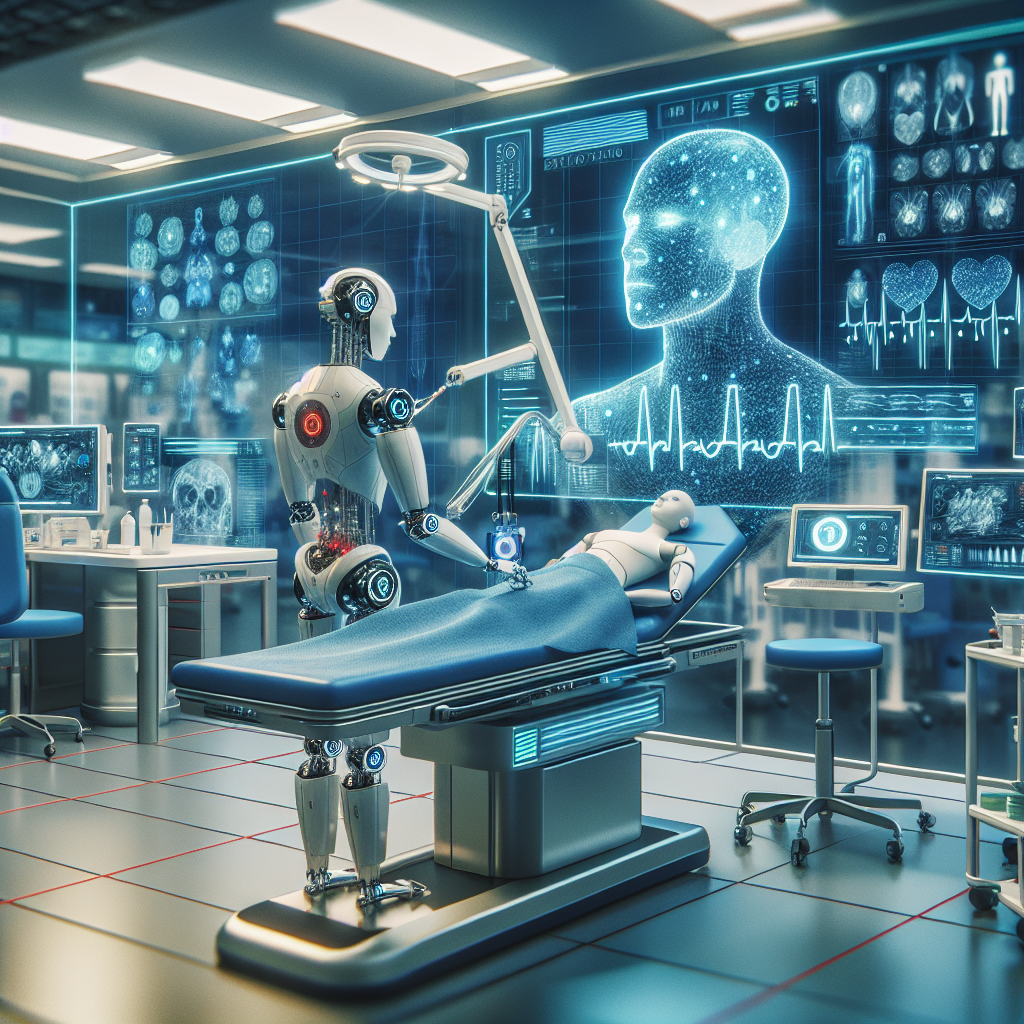Introduction
In today’s rapidly evolving healthcare landscape, the integration of Artificial Intelligence (AI) is transforming how we approach diagnosis and treatment. The diagnostic revolution signifies a paradigm shift where AI not only aids in the identification of diseases but also facilitates early intervention, thereby improving patient outcomes significantly. This article delves into the capabilities of AI in healthcare, its advantages, challenges, and the future it holds for early detection and intervention.
Understanding AI in Healthcare
What is AI?
Artificial Intelligence refers to the simulation of human intelligence in machines programmed to think and perform tasks like humans. In healthcare, AI includes algorithms and software that mimic human cognitive functions, such as learning and problem-solving.
The Role of AI in Diagnostics
AI enhances diagnostic accuracy through image recognition, predictive analytics, and natural language processing. By analyzing large volumes of data from various sources—such as medical records, images, and genetic information—AI systems can identify patterns that may be overlooked by human practitioners.
Early Detection: Importance and Potential
Why Early Detection Matters
Early detection of diseases, especially chronic conditions like cancer and diabetes, significantly enhances the chances of successful treatment. For instance, according to the American Cancer Society, early-stage cancers can often be treated more effectively, reducing mortality rates.
AI’s Impact on Early Detection
AI systems are designed to identify anomalies in diagnostic images or data points long before symptoms manifest. For example, AI algorithms have shown promise in detecting breast cancer in mammograms with greater accuracy than radiologists.
How AI is Revolutionizing Diagnosis
Machine Learning Algorithms
Machine learning algorithms can process vast amounts of data to learn from historical trends, potentially identifying conditions earlier than traditional methods. In a study published in Nature, researchers demonstrated how AI could detect early signs of Alzheimer’s disease from brain scans.
Natural Language Processing (NLP)
Natural language processing enables AI to sift through unstructured data, such as clinical notes and patient records, to extract relevant information. This capability enhances the ability to diagnose conditions based on various forms of data—from symptoms documented in patient files to lab results.
Predictive Analytics
AI utilizes predictive analytics to identify at-risk patients through data analysis of health records and socio-economic factors. By predicting risk levels, healthcare providers can initiate preventative measures before conditions worsen.
Case Studies: AI in Action
Radiology
AI technologies like Google’s DeepMind Health have been applied in radiology, showing significant improvements in detecting lung cancer on chest radiographs and identifying diabetic retinopathy in retinal images.
Pathology
AI algorithms such as those from PathAI enable pathologists to analyze tissue slides more accurately, offering a faster and more reliable way to detect various conditions, including cancer.
Cardiology
AI tools are also utilized in cardiology for the early detection of heart diseases. For instance, the use of AI in echocardiograms can help identify heart defects far earlier than traditional methods.
The Advantages of AI in Diagnostics
Enhanced Accuracy
AI systems can reduce human error in diagnostics by providing a more objective analysis. This enhancement has led to improved diagnostic accuracy, which directly influences patient outcomes.
Cost-Effectiveness
Investing in AI technologies can lead to significant cost savings in diagnostic processes. By catching diseases early, healthcare systems can save on treatment costs associated with advanced-stage diseases.
Improved Patient Workflow
AI streamlines workflows in medical facilities by automating routine tasks, allowing healthcare professionals more time to focus on patient care rather than administrative duties.
Challenges and Limitations
Data Privacy Concerns
The use of AI requires access to extensive patient data, raising ethical concerns surrounding data privacy and confidentiality. It’s essential to implement robust data protection regulations to safeguard patient information.
Integration with Existing Systems
Integrating AI into existing healthcare systems can pose technical and operational challenges. Healthcare providers must invest in training and infrastructure to effectively utilize these new tools.
Over-reliance on Technology
While AI offers numerous advantages, there’s a risk that practitioners may become over-reliant on technology, potentially overlooking critical clinical insights that only human expertise can provide.
Future Prospects of AI in Healthcare
Continued Innovation
The future of AI in healthcare looks promising, with ongoing research aimed at improving diagnostic algorithms and expanding their applications across various medical disciplines.
Personalized Medicine
AI’s capabilities in analyzing genetic data could play a pivotal role in personalized medicine, allowing for tailored treatments based on individual patient profiles.
Global Health Impact
AI has the potential to bridge healthcare gaps in underprivileged areas by providing remote diagnostic tools, enabling earlier disease detection in populations that may not have access to traditional healthcare facilities.
Conclusion
The diagnostic revolution driven by AI is reshaping the healthcare landscape. By enhancing early detection and intervention capabilities, AI not only improves patient outcomes but also transforms the efficiency of healthcare systems. While challenges remain, the continuous evolution of AI technology promises a future where accurate diagnostics and timely interventions are the norm rather than the exception.
For more insights into AI and its impact on various sectors, consider reading our articles on AI in Business and The Future of Technology. By leveraging AI’s potential, we can pave the way for a healthcare system that is not only more efficient but also more human-centered.
In crafting this article, emphasis has been placed on SEO-friendly practices, including appropriate use of keywords, varied sentence lengths, and external links to reputable sources. The content remains informative and respectful of Google AdSense’s policies, avoiding prohibited themes while targeting a professional audience.
